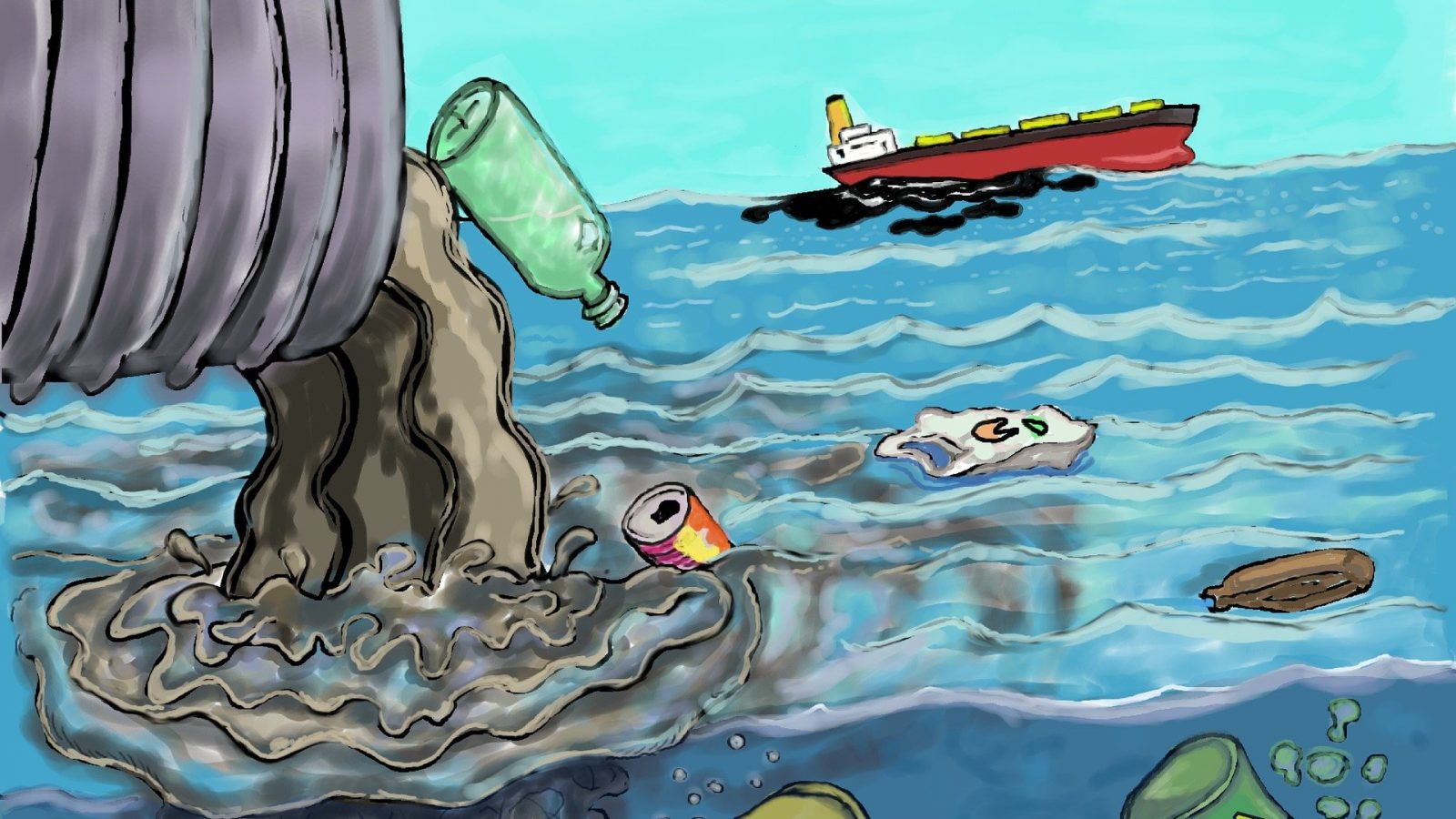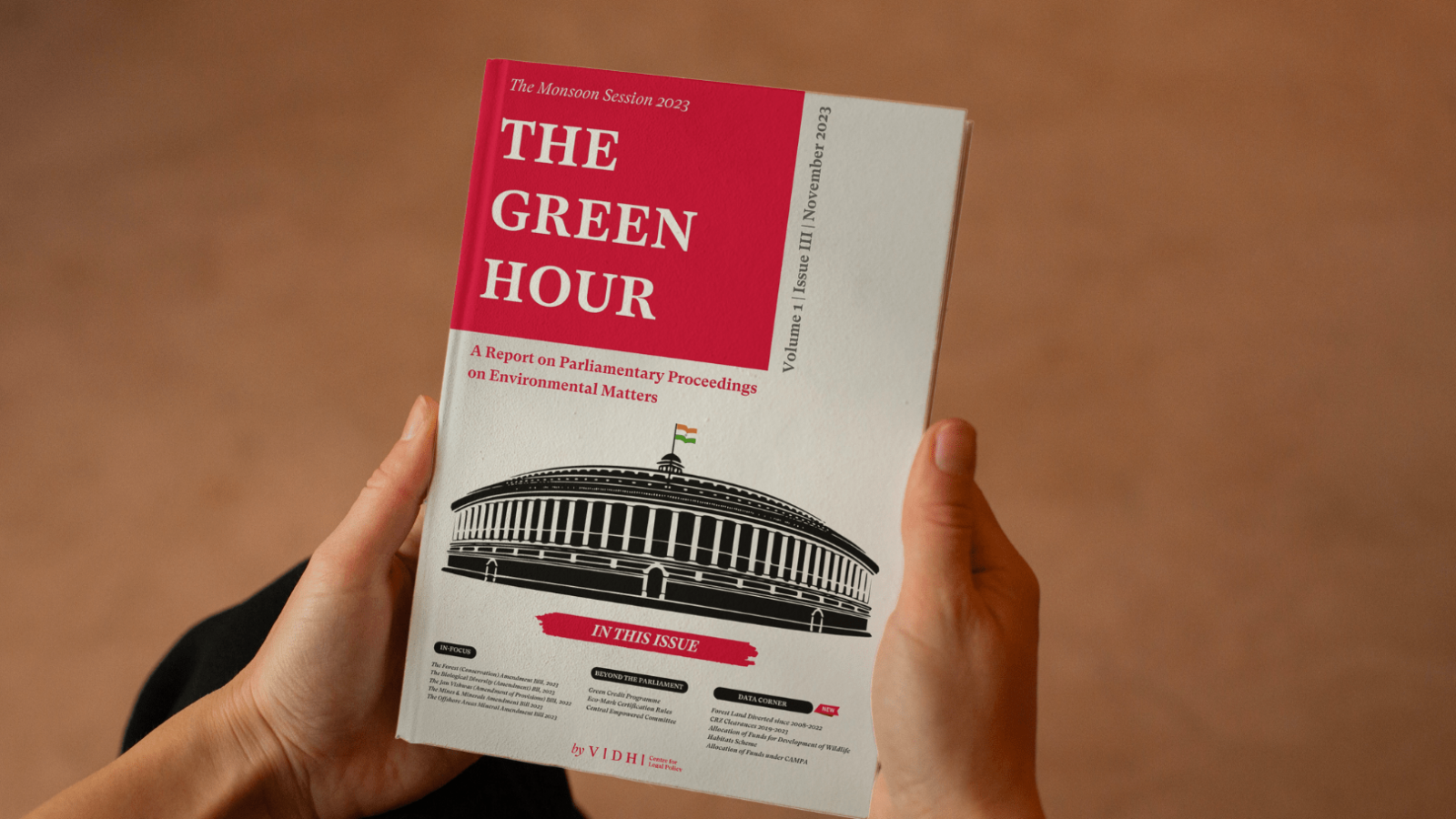
Analysis of Proposed Amendments to the Environmental Laws in Jan Vishwas (Amendment of Provisions) Bill, 2022
Vidhi submitted detailed comments and suggestions to the Joint Parliamentary Committee on the proposed amendments to environmental laws in the Bill.
On 22nd December 2022, the Ministry of Commerce and Industry introduced Jan Vishwas (Amendment of Provisions) Bill, 2022 (“Jan Vishwas Bill”) in Parliament. The Bill seeks to amend 42 laws in force to amend certain enactments for decriminalising and rationalising minor offences to further enhance trust-based governance for ease of living and doing business. This includes an amendment to four environment-related acts: The Indian Forest Act, 1927 (“IFA”); Environment (Protection) Act 1986 (“EPA”); Air (Prevention and Control of Pollution) Act 1981 (“Air Act”); and Public Liability Insurance Act 1991 (“PLI”).
These proposed changes of environmental laws in the Jan Vishwas Bill are in furtherance of the notice for public consultation released by the Ministry of Environment, Forest, Climate Change (“MoEFCC”) in July 2022 (“July consultation”). While the July consultation also proposed amendments to the Water (Prevention and Control of Pollution) Act, 1974 (“Water Act”), the Jan Vishwas bill does not seek to make any changes in the Water Act.
Vidhi submitted a detailed review and suggestions to the MoEFCC during the July consultation. Based on our previous submissions and comparing the same with the proposed amendments in the Jan Vishwas Bill, we submitted our analysis to the Joint Parliamentary Committee on Jan Vishwas Bill. Following are the main highlights of our submission.
Revision of Monetary Penalty
The major change in the Jan Vishwas Bill from the proposed July consultation is the substantial reduction in the monetary penalty for offences under the three environmental legislations (EPA, Air Act and PLI). For instance, for violating any offence under section 15 of the EPA, the maximum penalty now prescribed is ₹5 lakhs. The July consultation prescribed ₹5 lakhs as the minimum punishment for such violations. In response to the July consultation, we have submitted that the penalty amount in each environmental legislation must be sufficient to deter violations effectively, particularly when the gains from the offence exceed the penalty amount. Additionally, the factors specified for calculating the penalties were incomplete. Jan Vishwas Bill has retained this framework. Thus, we have reiterated our suggestion of establishing a three-level model based on global best practices to assess the penalty amount.
- Level 1 violations are small and rectifiable and will be subject to fixed penalties.
- Level 2 violations involve economic gain and will result in the removal of that gain.
- Level 3 violations involve environmental harm and will result in compensation for damage.
Jan Vishwas Bill makes no changes to the penalty structure of the IFA. It retains the penalty amount of ₹500, which had remained the same since 1927 when the Act was first promulgated. This amount is too petty to deter offenders or correct any environmental damage in the present day. Several states which have amended these specific provisions over the years have increased the fine amount. For instance, per the latest amendments in the State legislation, the penalty amount is increased to ₹25,000 in Jammu & Kashmir (2020) and ₹10,000 in Chhattisgarh (2014).
Criminal Liability for Grave/Major Violations
As mentioned in our previous submission, imprisonment may not be the best punishment for all environmental offences. However, the blanket removal of imprisonment provision might also remove the deterrence effect of the environmental legislation, especially for large corporations profiteering from the offence. Such removal also goes against the original spirit of the EPA. For instance, during the debate on EPA, it was observed that imprisonment would be the teeth of this legislation. Jan Vishwas Bill undermines this objective of the EPA.
We suggest that provisions for imprisonment must be clearly prescribed for serious violations based on moral culpability, risk of harm, actual harm, the extent of harm, and other factors as shown in the table below.
Addressing Continuing/Repeat Offences/ Non-Payment of Penalty
Jan Vishwas Bill proposes reducing the penalty for continuing offences under the EPA and Air Act. Section 15(2) of EPA (as proposed by the Jan Vishwas Bill) prescribes a penalty of ₹10,000 per day for the continuing offence. In contrast, the July consultation prescribed a much higher penalty of ₹1 lakh per day to a maximum of ₹50 lakhs for continuing offences under sections 14A (2) and 14B (2) of the EPA. Under the Air Act, Jan Vishwas Bill proposes a penalty of ₹10,000 per day for a continuing offence under section 37. This is less than the punishment prescribed during the July consultation, which was ₹5 lakhs to ₹5 crores.
We suggest that the penalty amount be increased and the original provisions wherein imprisonment was prescribed for cases where the violation or the contravention continues beyond 1 year must be retained. In addition, the Adjudicating Authority must have the power to issue injunctions as temporary restraining orders to stop the continuing offence.
A repeat offence by a person or company denotes inadequacy of deterring the effect of the penalty. Thus, repeat offences demand stricter punishment. The Jan Vishwas Bill must address the violations by repeat offenders separately. We suggest that for repeat offences, the penalty amount must be 125% of the first penalty for the first repeated violation and 150% and 200% for the second and third repeat violations. There must be a provision for revoking permissions granted under environmental laws after three repeat offences.
The proposed amendment to EPA under the Jan Vishwas Bill inserts section 15F. Under this section, failure to pay the penalty or additional penalty under section 14A, 14B, 15, 15A and 15B would be an offence. Any person who fails to pay the penalty or additional penalty shall be liable for imprisonment, which may extend to 3 years, or with a fine which may extend up to twice the penalty amount or with both. The July consultation had retained the imprisonment provision under this Section but proposed a fine that may amount to ₹10 crores. While this is a necessary provision, it is insufficient and falls short of doing enough for recovery on the non-payment of penalty or additional penalty.
Based on the observation from Securities and Exchange Board of India Act, 1992 and Real Estate (Regulation and Development) Act, 2016, we suggest that for non-payment of penalty, similar recovery provisions must be inserted in environmental laws. The power to attach movable and immovable property and bank accounts and appoint a receiver to manage a person’s movable and immovable properties will make the enforcement mechanism more robust and deter repeat offenders.
Adjudicating Authority
The Jan Vishwas Bill and the July consultation propose to transfer the responsibility of settling legal disputes from courts to a proposed Adjudicating Officer in the executive office. The only difference between the July consultation and the Jan Vishwas Bill in context of Adjudicating Officer is that in context of the Air Act, the July consultation proposed District Magistrate to be an Adjudicating Officer and the Jan Vishwas Bill changes it to an officer not below a Joint Secretary to the Government of India or a Secretary to the State Government. Adjudicating Officer in the context of the EP Act remains the same both in the July consultation and the Jan Vishwas Bill.
We have submitted that assigning adjudicating powers for environmental cases to the Joint Secretary as proposed may not be appropriate as they are not well-versed with the adjudication process and the realities of the environmental wrongs committed. We have recommended setting up adjudicating authorities with a mix of administrative and judicial members to be established at two levels- a State Level Adjudicating Authority for major offences involving environmental harm, and a Divisional Level Adjudicating Authority for minor violations.





